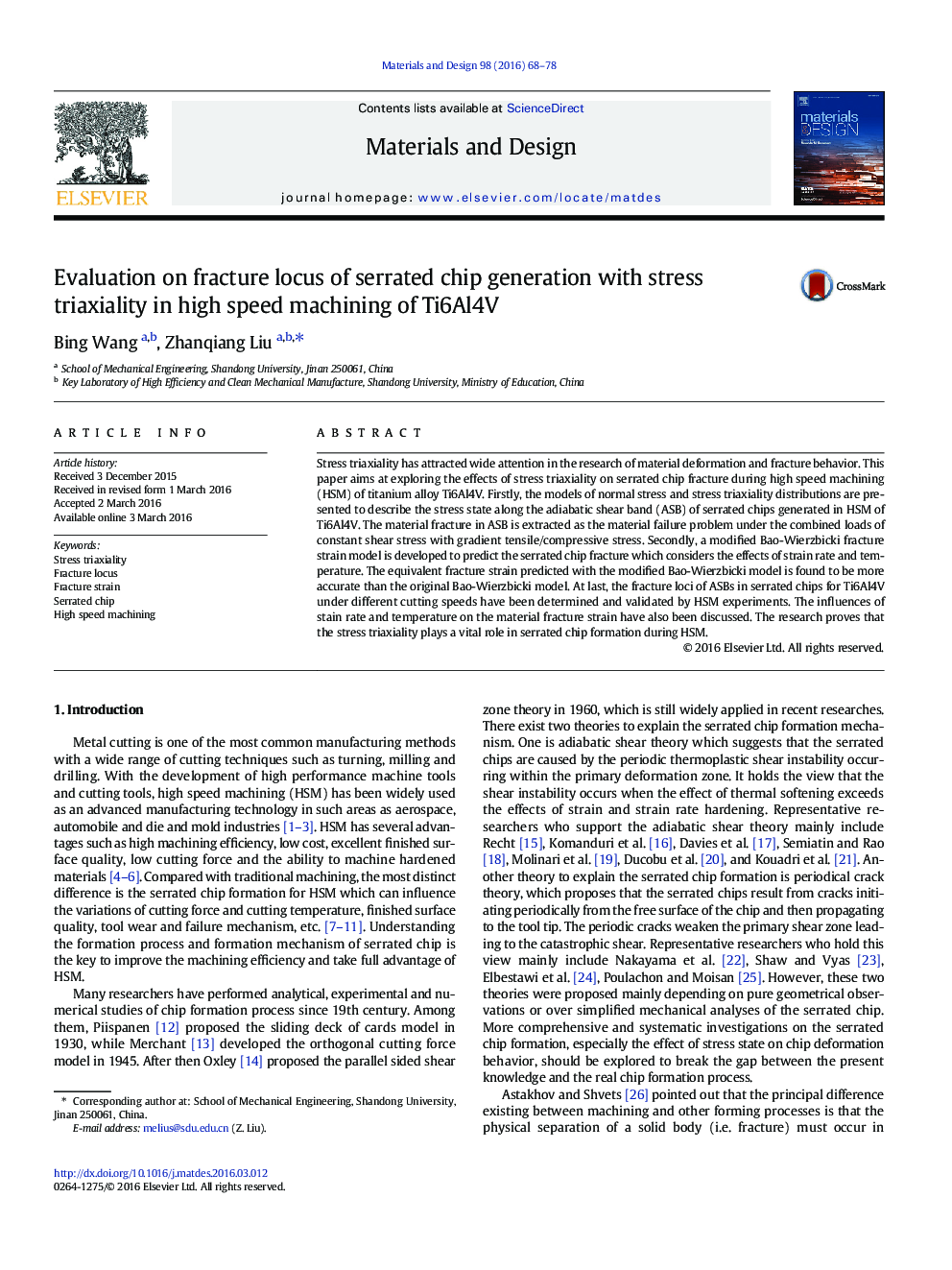| Article ID | Journal | Published Year | Pages | File Type |
|---|---|---|---|---|
| 828119 | Materials & Design | 2016 | 11 Pages |
•Serrated chip fracture is influenced by stress triaxiality distributed along primary deformation zone.•The distributions of normal stress and stress triaxiality along primary deformation zone are modeled.•Bao-Wierzbicki model is modified with the consideration of strain rate and temperature to predict serrated chip fracture.•Extension of tensile stress zone under higher cutting speeds leads to increases of chip serrated degree and crack length.
Stress triaxiality has attracted wide attention in the research of material deformation and fracture behavior. This paper aims at exploring the effects of stress triaxiality on serrated chip fracture during high speed machining (HSM) of titanium alloy Ti6Al4V. Firstly, the models of normal stress and stress triaxiality distributions are presented to describe the stress state along the adiabatic shear band (ASB) of serrated chips generated in HSM of Ti6Al4V. The material fracture in ASB is extracted as the material failure problem under the combined loads of constant shear stress with gradient tensile/compressive stress. Secondly, a modified Bao-Wierzbicki fracture strain model is developed to predict the serrated chip fracture which considers the effects of strain rate and temperature. The equivalent fracture strain predicted with the modified Bao-Wierzbicki model is found to be more accurate than the original Bao-Wierzbicki model. At last, the fracture loci of ASBs in serrated chips for Ti6Al4V under different cutting speeds have been determined and validated by HSM experiments. The influences of stain rate and temperature on the material fracture strain have also been discussed. The research proves that the stress triaxiality plays a vital role in serrated chip formation during HSM.
Graphical abstractFigure optionsDownload full-size imageDownload as PowerPoint slide
